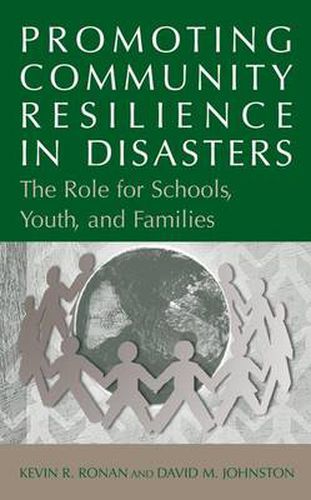Readings Newsletter
Become a Readings Member to make your shopping experience even easier.
Sign in or sign up for free!
You’re not far away from qualifying for FREE standard shipping within Australia
You’ve qualified for FREE standard shipping within Australia
The cart is loading…






This title is printed to order. This book may have been self-published. If so, we cannot guarantee the quality of the content. In the main most books will have gone through the editing process however some may not. We therefore suggest that you be aware of this before ordering this book. If in doubt check either the author or publisher’s details as we are unable to accept any returns unless they are faulty. Please contact us if you have any questions.
When large-scale disasters occur, they typically strike without warning–regardless of whether the cause is natural, such as a tsunami or earthquake, or human-made, such as a terrorist attack. And immediately following a hazardous event or mass violence, two of the most vulnerable groups at risk are a community’s children and their family members. Promoting Community Resilience in Disasters offers both clinicians and researchers guidance on hazard preparation efforts as well as early response and intervention practices. It emphasizes an evidence- and prevention-based approach that is geared toward readiness, response, and recovery phases of natural and human-made disasters, examining such key topics as: - Establishing a community resilience framework - Reviewing current theory and research - Understanding the role for schools, youth, and families - Building a partnership and multidisciplinary perspective - Recognizing the importance of readiness and risk reduction - Providing public education and response during a crisis - Developing recovery programs that focus on physical and social factors - Setting evidence-based guidelines for practice Establishing an interface between research and practice Promoting Community Resilience in Disasters is specifically geared toward assisting those who work in school or community settings–including school psychologists and counselors, emergency managers and planners, and all mental health professionals–not only to increase resilience after a disaster, but to respond and intervene as quickly as possible when catastrophe strikes. It will assist those charged with the responsibility for helping others respond to and rebound from major traumas, especially clinicians and other professionals who work with children and their family members.
$9.00 standard shipping within Australia
FREE standard shipping within Australia for orders over $100.00
Express & International shipping calculated at checkout
This title is printed to order. This book may have been self-published. If so, we cannot guarantee the quality of the content. In the main most books will have gone through the editing process however some may not. We therefore suggest that you be aware of this before ordering this book. If in doubt check either the author or publisher’s details as we are unable to accept any returns unless they are faulty. Please contact us if you have any questions.
When large-scale disasters occur, they typically strike without warning–regardless of whether the cause is natural, such as a tsunami or earthquake, or human-made, such as a terrorist attack. And immediately following a hazardous event or mass violence, two of the most vulnerable groups at risk are a community’s children and their family members. Promoting Community Resilience in Disasters offers both clinicians and researchers guidance on hazard preparation efforts as well as early response and intervention practices. It emphasizes an evidence- and prevention-based approach that is geared toward readiness, response, and recovery phases of natural and human-made disasters, examining such key topics as: - Establishing a community resilience framework - Reviewing current theory and research - Understanding the role for schools, youth, and families - Building a partnership and multidisciplinary perspective - Recognizing the importance of readiness and risk reduction - Providing public education and response during a crisis - Developing recovery programs that focus on physical and social factors - Setting evidence-based guidelines for practice Establishing an interface between research and practice Promoting Community Resilience in Disasters is specifically geared toward assisting those who work in school or community settings–including school psychologists and counselors, emergency managers and planners, and all mental health professionals–not only to increase resilience after a disaster, but to respond and intervene as quickly as possible when catastrophe strikes. It will assist those charged with the responsibility for helping others respond to and rebound from major traumas, especially clinicians and other professionals who work with children and their family members.